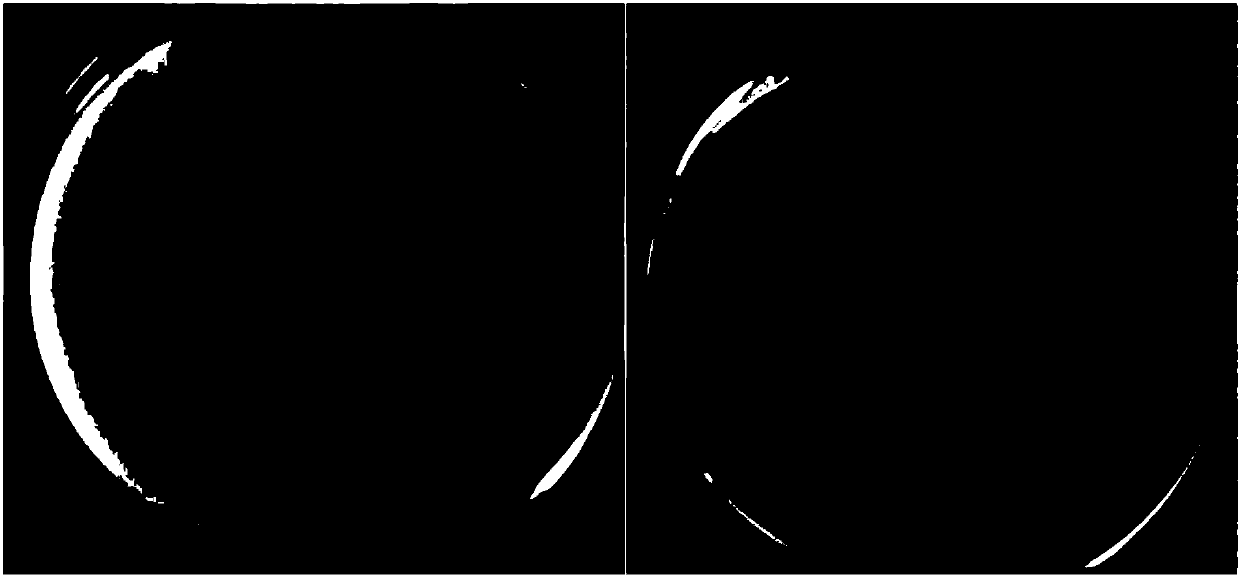A Strain of Aspergillus tubingensis ct1 and Its Application in Solubilizing Phosphorus in Saline-alkali Land
A technology of Aspergillus tabin and Aspergillus bini, which is applied in the fields of biotechnology and agricultural yield increase, can solve problems such as low yield and low phosphorus utilization efficiency, and achieve the effects of improving utilization rate and promoting crop yield increase.
- Summary
- Abstract
- Description
- Claims
- Application Information
AI Technical Summary
Problems solved by technology
Method used
Image
Examples
Embodiment 1
[0021] Example 1 strain screening
[0022] The Yellow River Delta was collected, and the soil samples were screened according to the cultivation method of Martin's medium, and the colonies with large transparent circles, high transparency, and vigorous growth were selected for isolation, screening and purification, until a single colony was isolated and then placed for observation. Store on the slant of Shi's medium in a refrigerator at 4°C. We obtained 14 strains of phosphate-solubilizing bacteria through primary screening.
[0023] The 14 strains of phosphate-solubilizing bacteria were re-screened using inorganic phosphorus medium, and the phosphate-solubilizing bacteria with the strongest phosphorus-solubilizing ability were selected to measure the phosphorus-solubilizing ability of organic phosphorus. Finally, the phosphate-solubilizing bacterium Aspergillus tubingensis CT1 was obtained, which had a high phosphorus-solubilizing ability, up to 523.5 mg / L. The result is as...
Embodiment 2
[0025] Embodiment 2: Morphological characteristics of Aspergillus tubingensis bacterial strain
[0026] Put a piece of filter paper at the bottom of the petri dish, put a glass slide rack on the filter paper, put a glass slide and two coverslips on the glass slide, cover the dish, use newspaper for external use, seal it, and extinguish it by high-pressure steam Sterilize at 0.101MPa and 121°C for 20 minutes in a bacteria pot, and dry in an oven at low temperature. Use a sterilized dropper to draw a small amount of melted Chapei culture medium, drop 1 / 2 drop to the inoculation site of the glass slide, and then use an inoculation needle to pick a small amount of mycelium of Phospholyticum to be observed to the slide glass in the wet chamber a. Before the culture medium is completely solidified, cover the cover glass so that the distance between the cover glass and the glass slide is quite close but not in contact. Finally, pour an appropriate amount of 20% sterile glycerin int...
Embodiment 3
[0029] Example 3 Sequence determination and identification of Aspergillus tubingensis strain
[0030] ITS sequence analysis uses PDA solid medium to cultivate fungi, scrape the mycelium on the surface of the plate, put it into a mortar and grind it with liquid nitrogen. Genomic DNA was extracted from the ground mycelia using a fungal total DNA extraction kit. PCR amplification was carried out by using the PCR universal primers of the fungal ITS sequence (the upstream primer is ITS1: 5'-TCCGTAGGTGAACCTGCGG-3'; the downstream primer is ITS4: 5'-TCCTCCGCTTATTGATATGC-3'). A 25 μl PCR reaction system was used: 2.5 μmol L-1 dNTPs, 10 μmol L-1 upstream primer, 10 μmol L-1 downstream primer, 3U Taq plus DNA polymerase, 1×PCR reaction buffer. The PCR amplification program was: 94°C for 5 min; 94°C for 1 min, 57°C for 45 s, 72°C for 45 s, a total of 35 cycles; 72°C for 10 min.
[0031] The PCR amplification product was detected by agarose gel electrophoresis with a mass fraction of 1....
PUM
 Login to View More
Login to View More Abstract
Description
Claims
Application Information
 Login to View More
Login to View More - R&D
- Intellectual Property
- Life Sciences
- Materials
- Tech Scout
- Unparalleled Data Quality
- Higher Quality Content
- 60% Fewer Hallucinations
Browse by: Latest US Patents, China's latest patents, Technical Efficacy Thesaurus, Application Domain, Technology Topic, Popular Technical Reports.
© 2025 PatSnap. All rights reserved.Legal|Privacy policy|Modern Slavery Act Transparency Statement|Sitemap|About US| Contact US: help@patsnap.com



